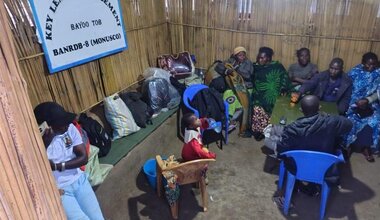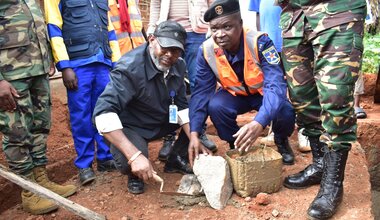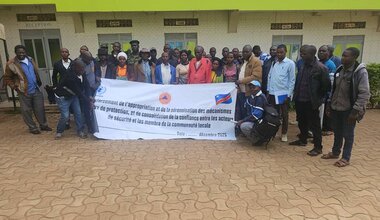MONUSCO organizes a photo exhibition in Lubumbashi
Lubumbashi, 23 July 2015 – The city of Lubumbashi is hosting, from 22 through 30 July 2015, the first edition of the United Nations photo exhibition; the photos basically show MONUSCO’s achievements for the past 15 years of its existence in the DRC.
A private viewing of the exhibition took place on Thursday 22 July in the presence of the Special Representative of the United Nations Secretary-General in DRC, Martin Kobler and the outgoing Governor of Katanga province, Moise Katumbi Chapwe.
Through forty photos taken in different provinces of the Democratic Republic of Congo, MONUSCO gives a quick overview of its achievements in the DRC. The photos are an illustration of the special partnership between MONUSCO and Congolese government officials, the excellent interactions between its staff members and the populations; the exhibition also displays photos of the different activities carried out in conflict-affected territories. Access to the photo exhibition is free; the exhibition takes place at Lubumbashi museum and will proceed in other provinces.
The chief of MONUSCO, Martin Kobler, is of the opinion that this photo exhibition is part of a cultural activity that will help trigger reflection on MONUSCO’s achievements as well as the future: ‘’what is likely to happen? what message do the photos convey? What do we mean by the future of MONUSCO? Is it time to start thinking of MONUSCO’s withdrawal? He wondered.
In an attempt to respond to those questions, Martin Kobler said the drawdown process of MONUSCO forces is a good thing. However, MONUSCO shall not leave behind a fragile country. ‘’MONUSCO is the largest and most expensive United Nations’ Mission. That is why the legitimate process of MONUSCO’s withdrawal must be phased out and handled with precaution’’, he highlighted.
Referring to the situation in Katanga, Martin Kobler recalls, upon assuming MONUSCO’s leadership, two years ago, the Province had 50 thousand displaced. Current statistics suggest ten times more now, say over 500 thousand displaced. ‘’Such a situation does not encourage us to leave’’.
It is worth noting that a few hours prior to the private viewing, the special representative had a tête-à-tête with the Governor of the Province. Both personalities, inter alia, reviewed the humanitarian situation and security related matters, the pygmies’ conflict, the upcoming elections and the territorial demarcation.
Nana Rosine Ngangoue
 UN
UN United Nations Peacekeeping
United Nations Peacekeeping



